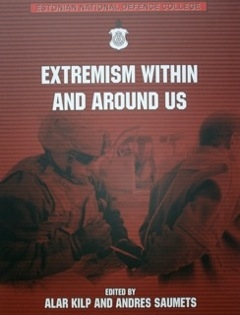RELIGION IN THE CONSTRUCTION OF THE CULTURAL 'SELF' AND 'OTHER'
RELIGION IN THE CONSTRUCTION OF THE CULTURAL 'SELF' AND 'OTHER'
Author(s): Alar KilpSubject(s): Cultural Essay, Political Essay, Societal Essay
Published by: Kaitseväe Ühendatud Õppeasutused
Keywords: social construction of reality; cultural representation of ‘Self’ and ‘Other’; social commonsense; social belief system; ‘scapegoating’; religious symbols in cultural identity
Summary/Abstract: From the social constructionist perspective, cultural differences are neither good nor bad, unless effectively constructed as such. The article sketches a pattern of the process of the construction of clashing cultural identities, which helps the understanding of the empirical paradox, why the apparently ‘most religious’ conflicts are usually the ones which are accompanied by the greatest economic, political and social fears, grievances and vulnerabilities. The process of construction of a cultural ‘Other’ is initiated by subjective feelings of insecurity, chaos and vulnerability. As a rule, the negative subjective feelings are caused by social, economical and political concerns, the ensuing conflict, however, is constructed based on cultural identities. It is made meaningful by a reliance on religious or ideological values, beliefs, myths and narratives, and is framed with general moral binaries (such as ‘good’ and ‘evil’). From the functional perspective, the representation of the negative cultural ‘Other’ fosters social integration, helps to avoid a sense of chaos and maintains the positive feeling of national identity. In general, religion and ideology fulfill the same cultural and political function and offer a similar variety of types (moderate and radical) of functions. Religion is more efficient than ideology in extraordinary and long-lasting crises. In Western societies, the role of religion as belief has lost its cultural relevancy, but religion as a cultural symbol of identity has remained functional both in construction of ‘Self’ and ‘Other’.
Journal: KVÜÕA toimetised
- Issue Year: 2011
- Issue No: 14
- Page Range: 197-222
- Page Count: 26
- Language: English

